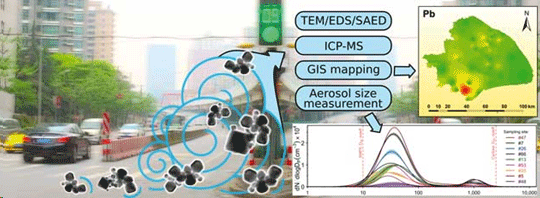|
NOVIDADES
Analysis of dust found on the streets of Shanghai, China has revealed higher than expected concentrations of toxic metals in the tiny particles inhaled by the city’s residents. Mapping pollution hotspots across the city with this technique identified sources of pollution and could provide a new way to monitor local air quality. Managing air pollution and its effects on human health is a challenge facing the world’s most populated and polluted cities. The dust that gathers on city streets, which comes from a wide range of natural and synthetic sources, is resuspended by wind and passing traffic, releasing tiny particles back into the atmosphere. Particles smaller than 2.5µm (PM2.5), including nanoparticles, are of particular concern as they can be inhaled deep into the lungs.  The team were able to link pollution hotspots to certain industries.
The size distribution and chemical composition of the isolated particles revealed some startling results. The aerosolised fraction contained many metals at higher concentrations than found in bulk dust, leading the authors to conclude that these metals are disproportionately concentrated in the PM2.5 particles. This finding indicates that analysis of un-aerosolised dust samples may underestimate the associated human health risk from street dust. Some specific pollution sources were identified by studying the pollutants' geographical distribution, as authors Yi Yang and Michael Hochella explain: ‘We found an extremely high concentration of lead in one sample and this sample was taken on a road near an e-waste plant. The occurrence of elevated lead in dust and aerosolised dust could pose the potential for extremely high risk to the local population.’ Correlations were also found between vehicle emission particles and traffic black spots. The authors believe that their work could help provide new ways to assess air quality in towns and cities. ‘Nanoparticle identification in urban dust could be a new measure of the level of environmental quality of an urban area,’ says Hochella. Identifying such chemical signatures could help policymakers to cut pollution. ‘The geographic information systems plots of the various elemental species are key for highlighting the pollution hotspots and targeting the sources to control their emissions,’ says Prashant Kumar, who researches urban air quality and atmospheric aerosols and nanoparticles at the University of Surrey, UK. Chemistry World, Posted: July 2016. Y. Yang et al, Environ. Sci.: Nano, 2016, 3, 534 (DOI: 10.1039/C6EN00056H). Assuntos Conexos: |
|||||||||||||||||||||||||